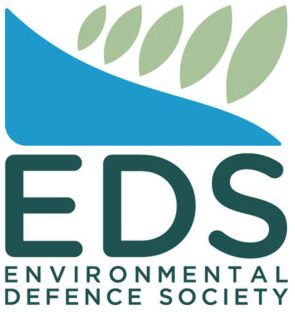TAIC Releases Final Report On Fatal 2022 Kaikōura Fishing Vessel Capsize
The Transport Accident Investigation Commission (TAIC) has published its final report on the fatal capsize of a commercial charter fishing vessel off the Kaikōura coast on 10 September 2022.
The report highlights nationwide and international safety issues that require the attention of New Zealand’s emergency rescue sector, emergency equipment designers and manufacturers, and maritime regulators.
Ten passengers were on a bird-watching trip on board the i-Catcher, an 8-metre aluminium pontoon boat. It capsized suddenly after almost certainly striking a whale. Five passengers and the skipper scrambled onto the upturned hull. The skipper called 111 on a cellphone and Police initiated a search and rescue operation. Responding vessels rescued all six.
The Police National Dive Squad later recovered the bodies of five deceased passengers from an air pocket inside the boat.
Chief Investigator of Accidents Naveen Kozhuppakalam says all five were wearing inflated lifejackets in the air pocket, which was heavily contaminated with petrol fumes, the result of a defective and leaking fuel system.
“Survivability was reduced by the combination of a toxic environment, cold water, and the confined space,” said Mr Kozhuppakalam.
Emergency equipment
“Getting thrown into water is stressful, debilitating, and disorientating. If you surface in a confined space and you’re wearing a life jacket you’ll want to swim underwater to escape. The Commission couldn’t determine if those in the air pocket tried to escape, but it’s tragic that a piece of equipment that usually saves lives – an inflated life jacket – would have hindered this.
“Life jackets are crucial life saving devices because they provide buoyancy and certain types can keep you afloat the right way up with your head above water, even when you’re unconscious
“But sometimes – as in this case – users need to remove an inflated lifejacket while in the water.
The Commission is calling for Maritime NZ to include this in their public education work. And vessel operators need to regularly inspect inflatable lifejackets and provide safety briefings that include instructions on lifejacket deflation and removal.
The Commission also found that survivors had to rely on a mobile phone to alert emergency services because they couldn’t get to i-Catcher’s Emergency Position Indicating Radio Beacon (EPIRB), which was correctly positioned for its type in the cabin
“Boat crews should carry Personal Locator Beacons to improve the chances of rescue when an Emergency Position Indicating Radio Beacon (EPIRB) proves inadequate.”
New Zealand emergency system
The report provides detailed analysis of another area of concern for the Commission – New Zealand’s system for fire, ambulance, police and coastguard emergency responses, with seven recommendations to resolve six major safety issues.
“The Commission found delays in the system and restricted information flow. And water rescue procedures should’ve included early engagement of the Police dive squad for their expertise, but didn’t,” said Mr Kozhuppakalam.
“There were limitations in Police’s resources to coordinate deployment of helicopters, boats and other assets during a Category I maritime search and rescue.
“And the Kaikōura region was vulnerable in an emergency because it wasn’t resourced to respond to a large maritime accident and had no maritime rescue plan for the region.
“The Commission has issued seven recommendations to resolve the safety issues; it’ll require coordinated work by emergency services, local councils, and central government bodies.
Rules and standards
A third area of concern is regulations and standards. In New Zealand, the Commission is calling on Maritime New Zealand to improve oversight of vessel surveys to detect safety issues like fuel system defects. Lifejacket servicing requirements must be improved to ensure they work correctly. Internationally, standards for lifejacket usability must be clearer, including guidance on deflation and removal.
The full investigation report is available on the TAIC website, www.taic.org.nz.
The Transport Accident Investigation Commission opens an inquiry when it believes the circumstances of an accident or incident have - or are likely to have - significant implications for transport safety, or when the inquiry may allow the Commission to make findings or recommendations to improve transport safety. The Commission's purpose is to improve transport safety by avoiding repeat accidents, rather than by ascribing blame.


 Gordon Campbell: On The Clash Between Auckland Airport And Air New Zealand
Gordon Campbell: On The Clash Between Auckland Airport And Air New Zealand NZ Government: Reducing Ambiguity About What Is Reasonably Practicable For Health And Safety Compliance
NZ Government: Reducing Ambiguity About What Is Reasonably Practicable For Health And Safety Compliance Office of the Speaker: New Zealand Parliamentarians Attend 150th IPU Assembly
Office of the Speaker: New Zealand Parliamentarians Attend 150th IPU Assembly RNZRSA: RNZRSA Supports Willie Apiata VC's Stand To Drive Change To Veterans’ Support Act
RNZRSA: RNZRSA Supports Willie Apiata VC's Stand To Drive Change To Veterans’ Support Act Diane McCarthy - LDR: War Hero Willie Apiata Entrusts MP With Victoria Cross Medal
Diane McCarthy - LDR: War Hero Willie Apiata Entrusts MP With Victoria Cross Medal PSA: Disappointing Govt Attack On Diversity, Inclusion In Public Service
PSA: Disappointing Govt Attack On Diversity, Inclusion In Public Service NZ Labour Party: Govt Health And Safety Changes Put Workers At Risk
NZ Labour Party: Govt Health And Safety Changes Put Workers At Risk


